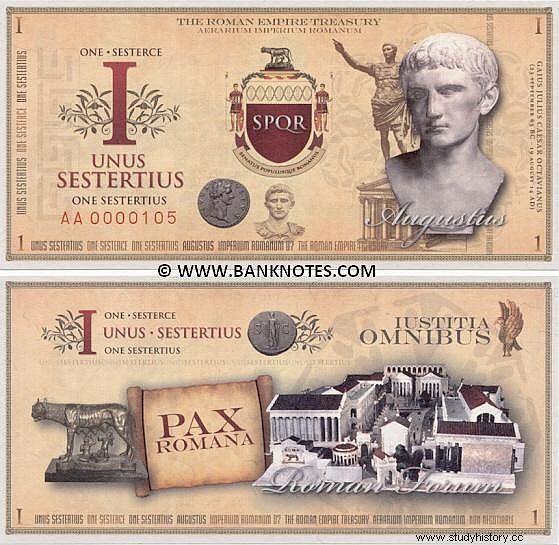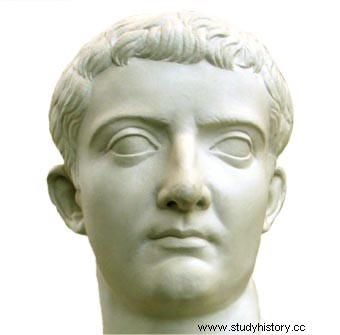It is difficult to add something that has not already been written about the rescue of the banks, but it is curious to know that in ancient Rome, during the first century, they also had their particular economic crisis and the way to tackle it was also by rescuing the banks … but with nuances that make it different.
This banking business must have started when money appeared. , in its different versions and forms, and was incorporated into the old barter-based economy. Overnight, the least of them accumulated large amounts that they had to put somewhere, the most needed a place where they could lend it to them and, logically, bankers were born, a kind of merchants who trade with money. And this happened in Sumer. The Sumerian economy was based on barter, and to prevent markets from becoming a battlefield, rulers and, later, kings issued tables of product equivalencies annually. Thus, any buyer could know that a kilo of wool was equivalent to, for example, two liters of beer, 300 grams of copper or 2 kilos of dates. Thanks to many of these tables that have been preserved to this day, we know that gold was not one of the most expensive metals. There were other materials that surpassed it, such as lapis lazuli, copper, tin and, above all, silver . One of the functions of the precious metal was to stabilize the economic system. Let us imagine a peasant who wants to buy a lamb to celebrate the wedding of his daughter and goes to the market with a certain amount of barley to exchange. What happens if the cattle handler does not need barley? The solution was very easy. The peasant could go to any sacred precinct where the barley was exchanged for its equivalent in silver (he also had the option of resorting to a money changer, but the temples asked for a much lower commission for the "banking operation", around 3, 5%). With the silver in his possession, he could already buy the lamb with the confidence that this metal would be accepted by any merchant (money). A curious element is that the silver that the temple gave him was presented in the form of rings weighing 8 grams or spirals in case of large quantities. He not only could wear them comfortably on his fingers and arms, but the rings could be divided into four parts of 2 grams each, like small change. So these early banks were directly related to temples.

How did banks work in ancient Rome?
Well, in Rome, as on many occasions, what they did was copy the Greeks who followed the bank/temple model of Sumer. The Temple of Saturn in Rome housed the Aerarium (treasury) in times of the Republic and during the imperial era the Temple of Castor and Pollux was the repository of the State treasury. The particularity of the banking system of the Greeks and Romans was that private bankers emerged... in Rome they were called argentarii (from argentum , silver). The argentarii They began as simple money changers (at that time Rome was the place that received the most "tourists") and to control counterfeits and remove "damaged" coins from circulation (being metals such as gold or silver, many scraped the edges and they were losing their weight), to later manage a business very similar to our times. There were two types of operations carried out by these bankers:the depositum , simply as trustees and guardians of the money for which the argentarius did not pay interest but with which he could not "trade" either; and the credit For the money deposited, the banker paid interest to the client and, in return, could move it to generate profits. In the "accounts" in the format depositum the banker paid, on behalf of the client, the debts contracted by him or the purchases at the auctions (the presence of the argentarii was frequent at slave auctions), either by "internal transfer" if both had an account in the same bank or through a bill of exchange; in the «accounts» in creditum format the bankers used this money to lend it to third parties and, logically, with a higher interest rate than the one they paid (remember that banks were/are/will be businesses). In addition, the argentarii were grouped in a collegiate body in which only they decided to accept new members.
What happened in the first century?
After the battle of Actium and the defeat of Antony and Cleopatra, Caesar Augustus took over the reins of Rome and began a period of unprecedented territorial expansion and economic development ("Rome will not be known even by the she-wolf that suckled Romulus and Remus «). In the words of Cassius Dio…
The Romans greatly missed Augustus because through his combination of monarchy and republican institutions, he guaranteed their freedom and also restored order and stability. In this way, they could live with moderate freedom in a monarchy without horrors [apparent I would add], and they did not have to endure the excesses associated with a popular government.

Caesar Augustus
There was a political, social and economic reorganization that allowed the fat cows to arrive:after controlling Egypt the grain arrived in Rome without setbacks, the Pax Romana allowed the growth of trade, credit flowed and citizens invested in land and islands ( apartment buildings that were rented, real estate boom?), even the upstarts who wanted to make a career in politics went into debt to finance shows and win the favor of the plebs, public works proliferated like mushrooms... Augustus was one of those who thought that the money had to be in motion and not collecting dust in the state coffers. But this period of fat cows had a price:brutal growth in prices (according to the poet Martial, «in Rome the highest prices were paid for both virtue and vice «). And who was going to eat this brown? Tiberius , his successor.
In the early years, Tiberius was still able to enjoy the legacy of Augustus, but that bubble had to burst sooner rather than later. In addition, the new emperor, which Uncle Scrooge, was one of those who liked to enjoy contemplating his riches and when he succeeded his adoptive father, his coffers were almost empty. The measures that Tiberius took put a brutal brake on the economy by reducing the money in circulation (although he sold it as measures to reduce prices, what he really wanted was to increase the imperial treasury). Investment in public works was drastically reduced, the distribution of grain was limited, some rich people were freed from the heavy burden of managing so many assets, accusing them of being enemies of the emperor (he kept all his assets and the members of the Senate were kindly guests to buy them at public auction with money they had to borrow) and, to top it off, he called the argentarii to order that in this inflationary period they had contributed by lending money with hardly any guarantees and at an interest rate above the legal one (in good times everyone turned a blind eye... also in ancient Rome). Given that this kind of "imperial audit" was endangering their business, his money and even his life, they asked for an 18-month moratorium to put their accounts in order. They closed the faucet of credits and demanded the payment of the debt. Overnight, land, houses, animals... everything was put up for sale in order to settle the debt with the argentarii (prices plummeted). Money stopped flowing and businesses were illiquid. Citizens rushed to withdraw their deposits to pay creditors and some banks, such as Balbo and Olio, fell because they could not meet the requests, which spilled over to other larger ones (some of these banks had also lent the money deposited in depositum format ). And, of course, when the city coughed, the entire Empire caught a cold.

Tiberius
And what did Tiberius do?
The emperor's measures made Rome go from an inflationary period to a terrible deflation that paralyzed the economy (don't worry about the richest because they, like cats, have seven lives and didn't suffer much from this crisis either). So, in the year 33 and much to his chagrin, he had to scratch his pocket and re-inject the money that he had withdrawn from circulation and that was stored in the coffers of the State. Through the banks, it distributed a million pieces of gold, but with the obligation to lend them to citizens without interest for three years and the prohibition of using them to balance their accounts –A ransom like the one made here… but very different in how the money is used -. That measure unfroze credit and woke up the economy.
